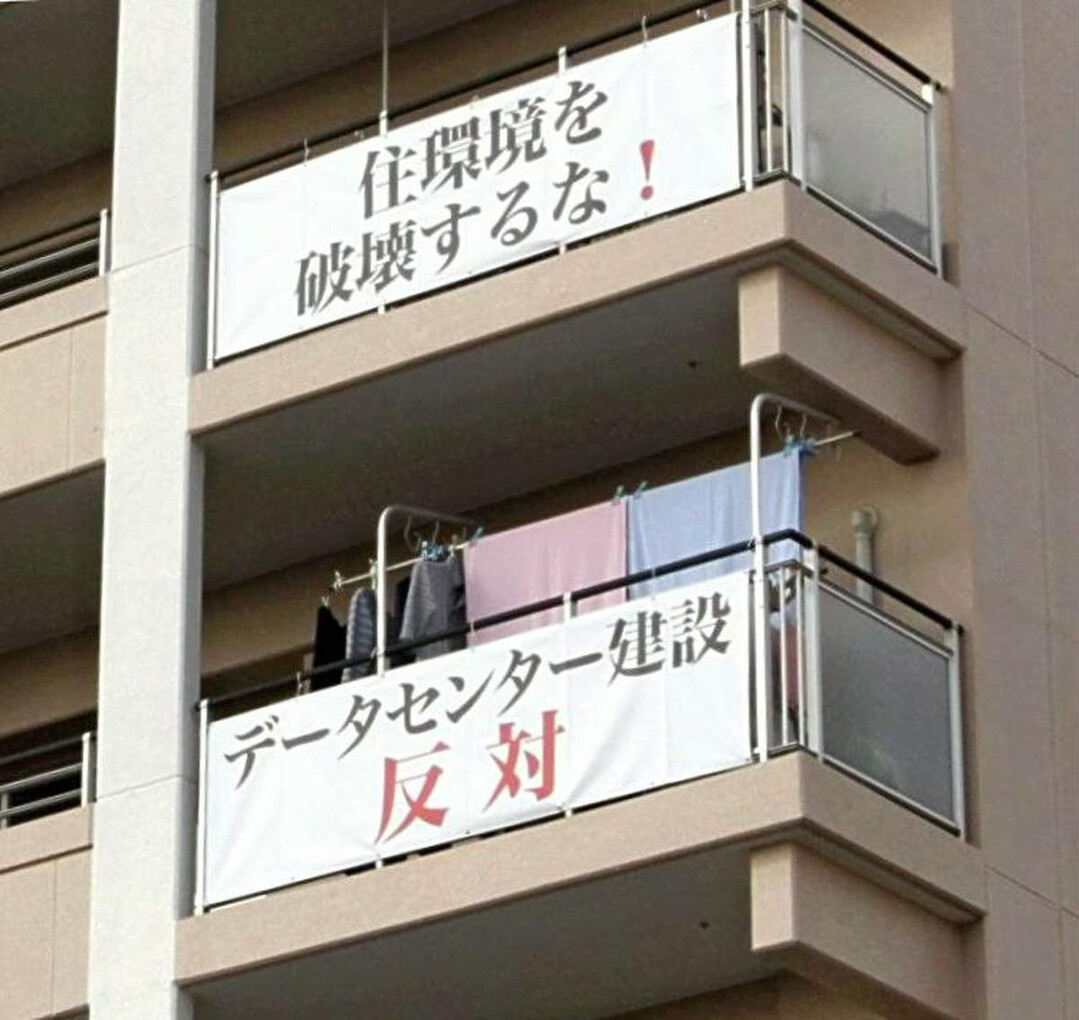
SHIROI, Chiba Prefecture -- A proposed plan to build two large-scale data centers in residential areas of Shiroi, Chiba Prefecture, has ignited fierce opposition from local residents. They argue the massive structures will dominate their neighborhoods and block vital sunlight.
GLP Japan Inc., a company known for developing large logistics facilities, plans to construct two data centers, each reaching heights of 30 to 40 meters. One facility is slated for construction directly across from a seven-story apartment complex in the Sakuradai district, while the other is planned adjacent to a residential area in the Fuku district.
In Sakuradai, the proposed development includes three buildings between 31.8 and 33.5 meters tall on a 3.6-hectare site. These buildings would face three blocks of the apartment complex across a narrow road. This plan has prompted residents to form a group dedicated to protecting their neighborhood and demanding a review of the project. Banners proclaiming "Don't destroy our neighborhood" hang from apartment balconies, demonstrating the strength of their opposition.
Satoru Nagashima, 76, a representative of the resident group, explained that the proposed buildings are 1.7 times taller than the apartment blocks and only 43 to 60 meters away. "Like a huge wall, the data center would create a very oppressive atmosphere," he stated. He also expressed concerns about the safety of underground heavy oil tanks planned for the site, as well as the potential negative impact on sunlight and property values.
In the Fuku district, the planned data center is situated on a 13-hectare site south of Shiroi Station on the Hokuso Line. The site is bordered by a junior high school and a Category 1 low-rise exclusive residential district, which is also designated as an urbanization control area, generally prohibiting construction. However, development is possible under the City Planning Law if a district plan is formulated.
GLP Japan's initial plan featured a 40-meter-high building, drawing immediate criticism from residents who feared its imposing presence would negatively impact the neighborhood. The company subsequently revised its plan, proposing a terraced building design. This revised plan aimed to keep the portion of the building closest to the neighboring apartments no higher than 15 meters, gradually increasing to 26 meters further away.
Despite this revision, and a subsequent "generally appropriate" assessment from the city planning council, GLP Japan presented a further revised plan at a resident information session last September. This latest iteration reinstated the 40-meter height for the entire building, including the section closest to the residential area.
Residents expressed dismay and frustration. "We weren't convinced with the original revised plan to begin with, and now with this new revised plan, we're back at square one," one resident commented.
Satoshi Oikawa, 59, a lawyer and local resident, criticized the company's approach. "This is like cheating in a game," he said. "What's going on now makes the council’s deliberations meaningless. It could be a violation of the City Planning Law." Oikawa previously filed a lawsuit, which was later dismissed, to block the city planning decision.
The Shiroi city assembly addressed the issue in November, stating that it had relayed residents' concerns to GLP Japan.
When contacted by The Yomiuri Shimbun, GLP Japan responded, "We have not announced any construction plans or disclosed any relevant location, so we cannot answer any questions." The standoff continues, with residents determined to protect their neighborhoods from the encroaching data center development.
[Copyright (c) Global Economic Times. All Rights Reserved.]






























